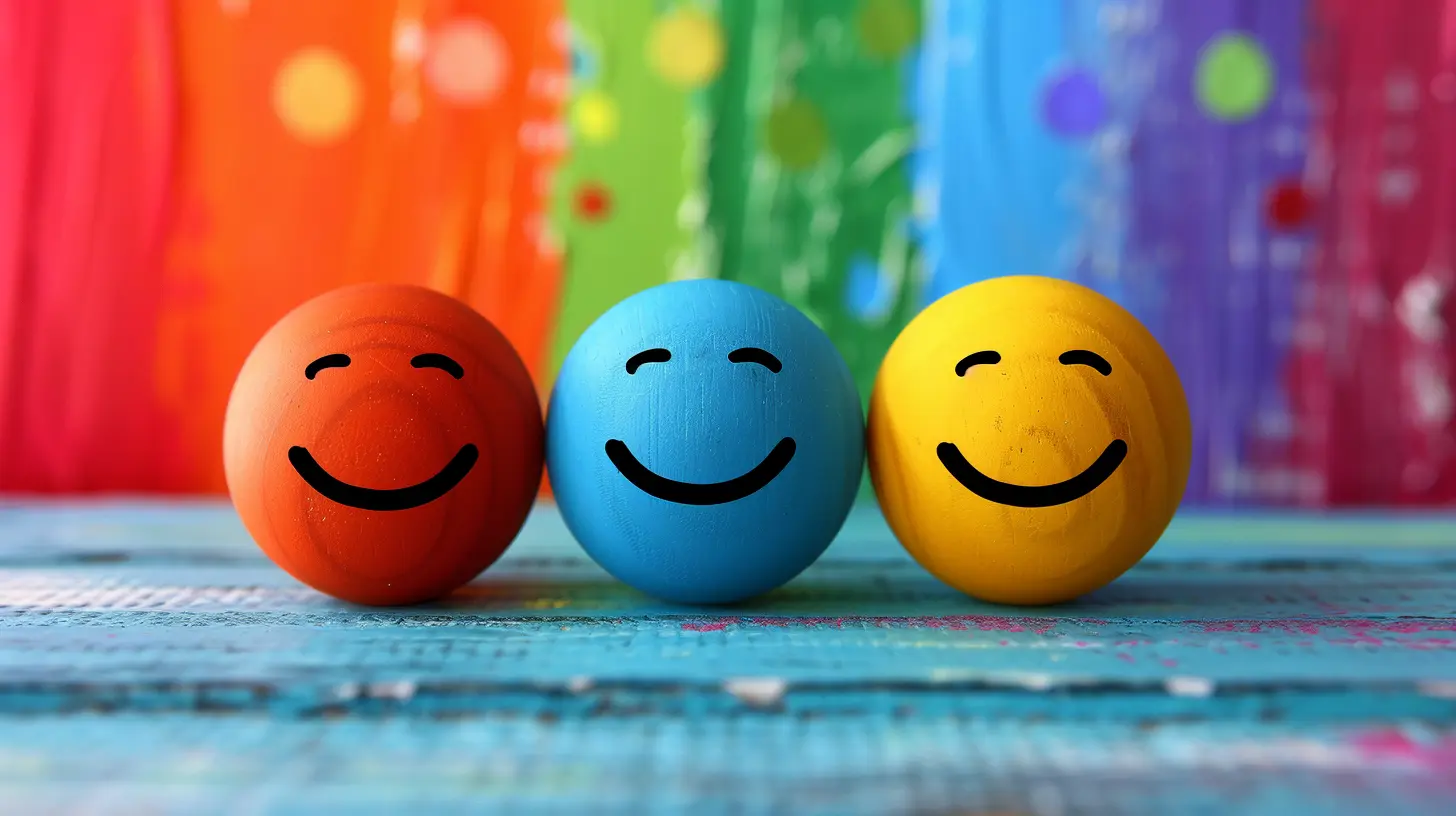How to Implement Social-Emotional Learning in the Classroom
23 November 2025
Social-Emotional Learning (SEL). It sounds like a trendy educational buzzword, right? But here’s the truth: it’s way more than a catchy phrase—it’s an absolute game-changer for classrooms around the world.
Imagine a space where students not only learn how to add fractions or write persuasive essays but also how to manage their emotions, get along with others, and solve conflict peacefully. That's what SEL brings to the table. And if you're an educator looking to make a real difference, you're in exactly the right place.
This guide will walk you through everything you need to know about how to implement Social-Emotional Learning in the classroom, using practical strategies, real-world examples, and a conversational tone to keep things light and easy to follow.
What Is Social-Emotional Learning (SEL) Anyway?
Let’s keep it simple: SEL is all about teaching kids how to handle their emotions, build relationships, and make good choices. It’s the emotional intelligence side of education—the “soft skills” that are actually pretty darn essential in life.The Collaborative for Academic, Social, and Emotional Learning (CASEL) defines five core competencies of SEL:
1. Self-awareness – Recognizing your emotions and how they affect your thoughts and behavior.
2. Self-management – Managing emotions in healthy ways, setting goals, and achieving them.
3. Social awareness – Showing empathy, respect, and understanding for others.
4. Relationship skills – Forming healthy relationships, communicating clearly, and working well with others.
5. Responsible decision-making – Making thoughtful and ethical choices.
Now, the big question: how do we actually get these into our classrooms?
Why SEL Matters More Than Ever
Before diving into the how, let’s talk about the why. Kids today are dealing with more pressure, more distractions, and more emotional challenges than ever before. From social media drama to high-stakes testing, it’s a lot!SEL can:
- Improve academic performance
- Reduce classroom behavior issues
- Build stronger teacher-student relationships
- Boost student mental health and resilience
So no, SEL isn’t just a “feel-good” addition—it’s a foundational part of creating a safe, engaging, and thriving learning environment.
Step-by-Step: How to Implement Social-Emotional Learning in the Classroom
1. Start With Yourself
Yep, this part isn’t about the students yet—it’s about you. Your own emotional intelligence sets the tone for the entire classroom. Think about it: how you respond to stress, show empathy, or manage conflicts becomes a model for your students.Ask yourself:
- Do I reflect on my emotions throughout the day?
- How do I handle classroom frustrations?
- Am I creating an emotionally safe space?
Leading by example is your first SEL move.
2. Create a Safe and Supportive Environment
Before students can learn SEL skills, they need to feel safe. Not just physically, but emotionally too.Here’s how you can build that:
- Establish classroom norms that promote respect, kindness, and active listening.
- Encourage open communication. Make it okay to talk about feelings.
- Use inclusive language and validate everyone's experiences.
Even something as simple as greeting each student by name can set the foundation for a safe space.
3. Integrate SEL into Daily Routines
Think SEL has to be a separate subject? Think again. It can be woven right into what you're already doing.- Morning meetings: Great for check-ins, building community, and practicing empathy.
- Exit tickets: Add SEL prompts like “How are you feeling today?” or “What’s one thing you struggled with?”
- Group work: A chance to teach collaboration, listening, and conflict resolution.
- Read-alouds and discussions: Choose books that explore emotions, dilemmas, or diverse perspectives.
The goal is to normalize SEL as part of your classroom’s daily rhythm—not just a once-a-week lesson.
4. Teach SEL Skills Explicitly
Yes, integration is great, but sometimes SEL needs to be taught head-on, just like math or reading.You can introduce SEL concepts through:
- Mini-lessons focused on one core competency per week
- Role-playing activities that give students hands-on practice
- Videos and stories that highlight emotional scenarios and ethical dilemmas
- Writing prompts like “Describe a time you overcame a challenge” or “How do you calm down when you’re upset?”
Plenty of SEL programs—such as Second Step, RULER, or MindUP—come with structured lesson plans, making it easier to get started if you need a roadmap.
5. Create Opportunities for Student Voice
Want to empower your students? Let them speak up.Giving students a say in classroom decisions helps build confidence, responsibility, and problem-solving—core SEL skills, all rolled into one.
Try this:
- Let students help create behavior expectations.
- Have classroom jobs or leadership roles.
- Use surveys or “classroom circles” to hear their thoughts.
You’ll be surprised how much buy-in you’ll get when students feel like their voice actually matters.
6. Use Reflection and Journaling
Self-awareness doesn't just happen overnight—it grows with reflection.Provide time for students to pause and think:
- How did the day go?
- What emotions popped up?
- What would I do differently next time?
A simple SEL journal can be a safe space for students to explore their feelings and set personal goals—kind of like a personal emotional-growth diary.
7. Practice Mindfulness and Emotional Regulation
Let’s face it: everyone, especially kids, can get overwhelmed. Mindfulness helps bring them back to center.Incorporate things like:
- Deep breathing exercises
- Guided meditation (just a few minutes!)
- Quick “mindful moments” before or after transitions
- Visualization techniques (like imagining a calm beach or happy place)
It’s like mental exercise for the brain—just as important as PE for the body!
8. Use Praise and Positive Reinforcement
Celebrate those emotional wins, not just academic ones! Recognizing effort in SEL builds motivation and confidence.Say things like:
- “I noticed how you helped your classmate. That showed a lot of empathy.”
- “You really managed your frustration well today. That’s not easy!”
- “Thanks for being a good listener during our circle time.”
Positive feedback not only boosts self-esteem but also reinforces the desired behavior for the rest of the class.
Tips for Overcoming Challenges
Let’s be real—implementing SEL isn’t always rainbows and butterflies. There can be resistance, time constraints, or even lack of training. But here’s how you can tackle those obstacles:⏰ “I Don’t Have Time for SEL”
Fair point. But remember, SEL isn’t about adding more onto your plate—it’s about weaving it into what you’re already doing. That 5-minute transition? Perfect time for a mindful stretch or a reflection question.😕 “I’m Not Trained in SEL”
You don’t need to be a psychologist to teach SEL. Start small. Use resources like CASEL.org or local workshops. Even simple routines—like check-ins or gratitude moments—can have major impact.❌ “My Students Don’t Respond to It”
Every class is different. Some students may need more time or consistency to warm up. Keep showing up, keep modeling, and keep making it relevant to them. Sometimes, it's the smallest things that make the biggest difference.Real-Life Classroom Examples
Let’s hear how real teachers are making SEL work:🧑🏫 Ms. Flores, 3rd Grade Teacher:
“I started with daily check-ins. Just a quick thumbs-up/down/middle to see how everyone’s feeling. It opened the door for deeper conversations I never had before.”
👩🏫 Mr. Thompson, Middle School Science:
“I tied SEL into science discussions—like the ethics of cloning or environmental responsibility. It helped students see the human side of science.”
🧑🏫 Ms. Grant, High School English:
“We write weekly gratitude letters. Sometimes to a classmate, teacher, or even themselves. It’s boosted morale and made my classroom feel tight-knit.”
Wrapping It Up: Keep It Real, Keep It Consistent
Implementing SEL isn’t about perfection—it’s about connection. It’s about showing students that feelings matter just as much as facts. That emotional intelligence is just as valuable as academic smarts.By taking small, intentional steps, you’ll create a classroom culture where students feel seen, heard, and empowered. And that’s the kind of space where real learning thrives.
So, start with a mindful moment tomorrow. Ask your students how they’re feeling. Celebrate a kind act. It doesn’t have to be fancy—it just has to be real.
Because at the end of the day, teaching hearts is just as important as teaching minds.
all images in this post were generated using AI tools
Category:
Teacher TrainingAuthor:

Anita Harmon

